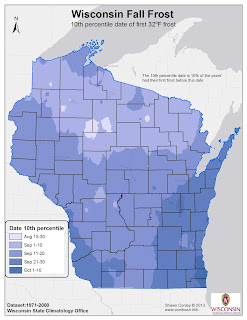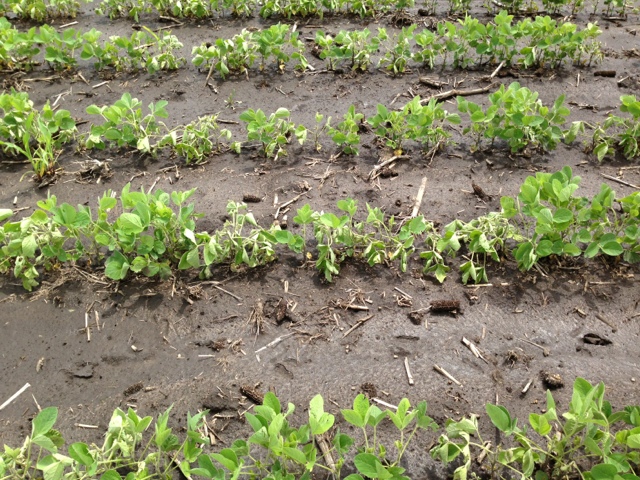Odds My Soybean Crop Will Mature Before A Killing Frost Hits
The Wisconsin soybean crop is slowly starting to mature, however many growers and crop consultants are still concerned about the risk of frost damage to late planted fields. In soybean an extended period (several hours) of temperatures 28 degrees F or lower is required to completely kill a soybean plant, though temperatures 32 degrees or less can still damage top growth. Those growers considering the state of their soybean crop and wondering the odds of making it to maturity before significant yield loss occurs must first correctly identify the soybean growth stage.
Once the crop growth stage has been determined we can estimate the number of days it will take for your field to reach R7 or physiological maturity. Across our Arlington and Hancock field sites it has taken 5-8 days to go from R3 to R4, 7-8 days to go from R4 to R5, 10-14 days from R5 to R6 and 14 days from R6 to R7. Note: we have seen crop development expedited the past few weeks due to heat and drought conditions. Next using the three figures below that show the 10th percentile, median, and 90th percentile date when you can expect a freeze event you can estimate the risk of a frost based on your crop growth stage.
For example: If you lived in SW Marathon county there is a 10% chance that a freeze event would have occurred prior to September 11-20, a 50/50 chance that a freeze event would occur prior to September 21-30, and a 90% chance a freeze event would have occurred prior to October 1-10. So if your soybean crop just entered the R5 crop growth stage today 9/7/13 there is a greater than a 50/50 chance that crop won’t make grain based on historical weather data.
Lastly if you are concerned about a freeze event please refer to Table 1 below that provides yield loss estimates of freeze damage by crop crop stage. This may help you decide whether you should risk taking the late planted soybean field as a grain crop or would that field be more valuable as a forage or green manure?
|
Table 1. Soybean Response to Freeze Damage
|
|
|
Growth Stage
|
Yield Reduction
|
|
R4 – Full pod
|
70%-80%
|
|
R5 – Beginning seed
|
50%-70%
|
|
R6 – Full seed
|
15%-30%
|
|
R7 – Beginning maturity
|
0%-5%
|
|
R8 – Full maturity
|
0%
|
Source: Saliba et. at. Kansas State University, 1982












